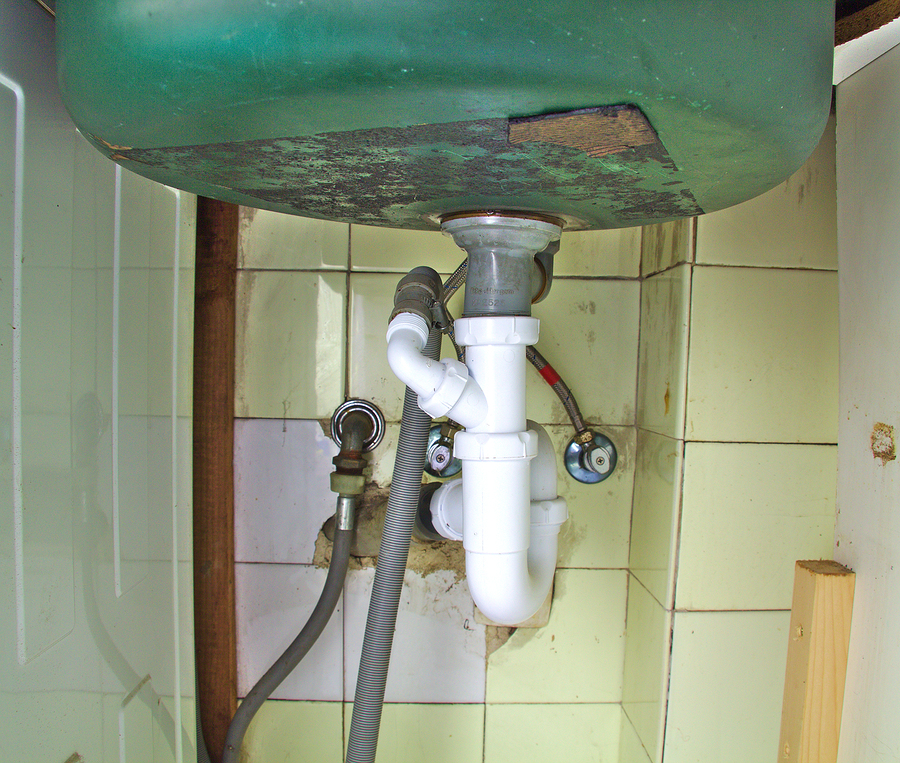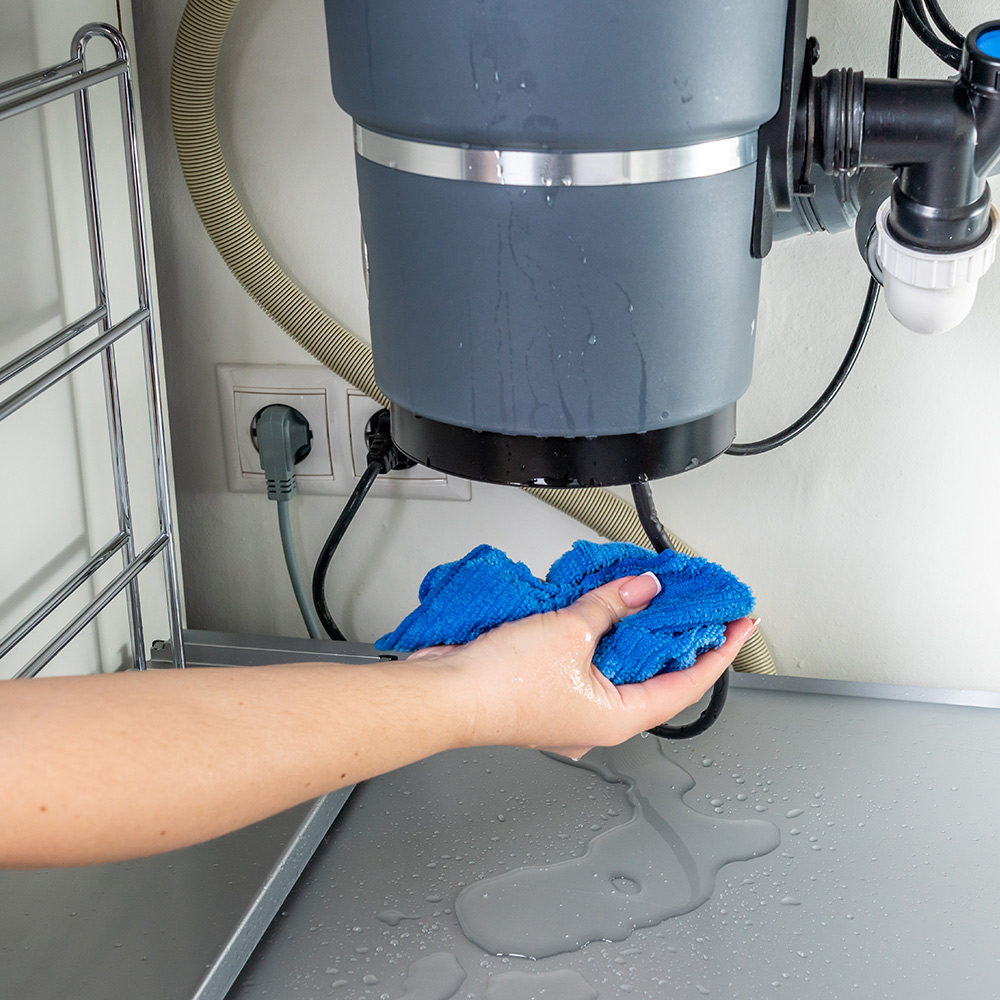Straightforward Techniques for Repairing a Leaky Garbage Disposal
Straightforward Techniques for Repairing a Leaky Garbage Disposal
Blog Article
Everybody has his or her own rationale involving The Handy Guide To Fixing Your Garbage Disposal Leaking.

Waste disposal unit are essential kitchen area home appliances that assist in getting rid of food waste successfully. Nonetheless, a leaking garbage disposal can be an aggravating and untidy problem to handle. Thankfully, lots of leaks can be repaired quickly with a couple of simple actions. In this article, we will certainly review exactly how to take care of a leaking garbage disposal properly.
Introduction
Waste disposal unit are installed under kitchen sinks and are created to shred food waste into smaller pieces, permitting it to pass through the pipes system quickly. While these tools are typically trustworthy, leakages can occur over time because of wear and tear, loosened connections, or damages to the unit.
Typical Causes of Leaks in Garbage Disposals
Worn Seals and Gaskets
Seals and gaskets play a vital role in preventing water from dripping out of the garbage disposal. Gradually, these parts can deteriorate, causing leakages around the disposal system.
Loose Connections
The links between the waste disposal unit and the pipes system can end up being loosened in time, causing water to leak out throughout operation.
Cracks or Openings in the Disposal System
Physical damage to the garbage disposal, such as splits or holes in the real estate, can additionally lead to leakages.
Recognizing the Source of the Leakage
Before trying to take care of a dripping garbage disposal, it is essential to recognize the source of the leakage. This can normally be done through aesthetic examination or by carrying out easy tests.
Visual Inspection
Check the waste disposal unit unit very carefully for any type of indicators of water leak. Pay close attention to areas around seals, gaskets, and connection points.
Checking for Leakages
One means to examine for leakages is by running water via the disposal system and checking for any type of noticeable signs of leak.
Devices and Materials Needed for Dealing With a Leaking Waste Disposal Unit
Before beginning the fixing process, collect the needed tools and products, including a screwdriver, flexible wrench, plumbing's putty, replacement seals or gaskets, and epoxy or patching material for fixing splits or holes.
Step-by-Step Guide to Repairing a Leaking Waste Disposal Unit
Switch off the Power
Before attempting any kind of repair services, guarantee that the power to the waste disposal unit system is turned off to stop the threat of electric shock.
Situate the Leak
Determine the precise location of the leak and determine the cause.
Tighten Connections
Utilize a wrench to tighten any type of loosened links between the disposal device and the plumbing system.
Change Seals or Gaskets
If the leakage results from used seals or gaskets, get rid of the old elements and replace them with new ones.
Patching Splits or Openings
For fractures or openings in the disposal system, use epoxy or a suitable patching material to seal the damaged location.
Examining the Waste Disposal Unit After Repair Service
As soon as the repair service is total, check the garbage disposal by running water via it to guarantee that the leakage has actually been resolved.
Preventive Maintenance Tips to Prevent Future Leaks
To avoid future leaks, it is necessary to do normal maintenance on your garbage disposal. This includes maintaining it clean, avoiding putting non-food items or hard objects down the disposal, and regularly looking for leakages or various other issues.
Final thought
To conclude, dealing with a leaking garbage disposal is a reasonably simple procedure that can be completed with fundamental devices and products. By following the actions described in this short article and practicing preventive upkeep, you can keep your waste disposal unit in good working problem and stay clear of pricey fixings in the future.
What to Do About a Leaking Garbage Disposal
A leaking garbage disposal often goes unnoticed until you confront a sopping cabinet, a foul-smelling puddle, or an audible drip-drip-drip from the unit. The fix can be frustrating, too, because the leak can stem from a number of components in the system. Fortunately, with a little sleuthing, you can zero in on the leak and—depending on the exact location—stop the icky oozing and repair the component that caused it. Worst case scenario, if it turns out that the garbage disposal must be replaced, installing a new one is a reasonable do-it-yourself task for those with basic plumbing skills. Read on to keep the cash you’d otherwise hand over to a pro.
Prepare to find the leak
Prior to testing the garbage disposal for leaks, unplug it at the wall outlet and turn off the power from the breaker box to prevent electrical shock. Then insert a watertight sink stopper into your sink drain and wipe the unit dry with a clean cloth. In any handy container, mix a few drops of food coloring into a few cups of water, and pour the dyed water onto the sink stopper to help you locate the leak.
Investigate the source
the top, where the disposal meets the sink drain the side, where the dishwasher hose or main drain pipe connects to the disposal or the bottom of the unit Inspect each of these locations while gliding a light-colored rag over the unit; the dyed water will readily show on the rag and reveal the location of the leak. If a leak isn’t immediately apparent, remove the sink stopper and pour a few more cups of dyed water down the sink drain, then check for leaks again. Leaks near the top of the unit are more likely to show themselves while the sink is plugged, while side and bottom leaks are more noticeable while the sink is unplugged.
The metal sink flange that sits directly inside the sink drain is typically sealed around the top with plumber’s putty (a clay-like sealant) and then secured from under the sink with bolts. If the plumber’s putty deteriorates, or the bolts loosen, the flange can no longer form a watertight seal between the sink drain and the disposal—which could cause a leak at the top of the unit.
To reseal the leaky flange, you must first detach the garbage disposal. Start by loosening the screws securing the main drain pipe to the disposal, then loosen the screws in the metal clamp securing the dishwasher hose to the disposal and detach the drain pipe and dishwasher hose from the disposal. Loosen the screws in the mounting ring that connects the disposal to the metal mounting assembly beneath the sink, then pull down the disposal and carefully set it on a clean, dry surface. Loosen the bolts in the mounting assembly with a wrench, then pull down the mounting assembly and set it near the disposal.

Hopefully you liked our post on The Handy Guide To Fixing Your Garbage Disposal Leaking. Many thanks for taking a few minutes to browse our article post. Sharing is good. Helping people is fun. Kudos for your time. Don't hesitate to check our site back soon.
Additional Information Report this page